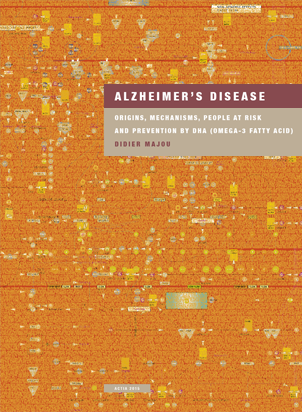ALZHEIMER’S DISEASE: ORIGINS, MECHANISMS, PEOPLE AT RISK AND PREVENTION BY DHA (OMEGA-3 FATTY ACID)
2015

Sporadic Alzheimer’s disease (SAD) is the most common form of dementia in the elderly. Alhough SAD has been studied for more than 100 years, since 1906, its exact causes remain to be clarified. This disease occurs when the combined effects of multiple risk factors exceed a threshold, thus impeding regulation mechanisms. For the first time, to our knowledge, a comprehensive approach describes the pathogenic mechanisms of SAD. This review takes into account behavior and metabolism; interactions between function, energy and oxidative stress which determine the concept of FEDOX; the relationships between FEDOX, free 17β-estradiol and free DHA (omega-3 fatty acid); regulation of 17β-estradiol and DHA; SHBG control (sex hormone-binding globulin); interactions between signaling by free 17β-estradiol and free DHA; controlled regulation and chronic imbalance that breaks the resilience and leads to pathology. In particular, the flow rate of GLUT-1 transporters (transportation of glucose and ascorbic acid precursor, DHAA) has a direct impact on kinetics at synapses and thus on the metabolism of glutamate, neurotransmission and cell viability. GLUT-1 are key transporters of synaptic kinetic equilibrium.
Beyond the review, the proposed mechanisms involve original hypotheses in SAD pathophysiology, in particular multiple pathogenic cascades induced by a chronic imbalance between neurological activities and metabolism capacities (genetics, diet). These dysregulations could result in neuronal degeneration and lead to cognitive deficits.
The description of the overall process determines risk factors that must be detected as early as possible-well before the onset of symptoms-in people at risk: elderly (postmenopausal or andropausal) people, specific FADS2 alleles (Δ6-desaturase gene) causing DHA dyslipidemia, hyper- or hypo-activities, with potential biomarkers (e.g. variants of the FADS2 gene, plasma DHA rate, plasma SHBG rate). Early detection will allow them to receive preventive treatment, based on DHA/EPA intake and behavioral changes in daily life.
Author
Didier Majou (Actia)



